By Dennis Whitehead
On the morning of Friday, April 13, 1945, three men gathered at a table in L’Espadon of the Ritz Paris over a breakfast of coffee and croissants. News of the death of President Franklin D. Roosevelt the day before was, of course, foremost on everyone’s mind. The man at the center of attention in this group was William Donovan, director of the Office of Strategic Services (OSS) from Washington, D.C. The man to whom Donovan was listening was the London station chief, William Casey.
The third man, unable to sit still awaiting his turn to speak, was Bern station chief Allen Dulles. Casey was apprising Donovan of the Allied successes in the European Theater. The war was ending in Europe, but no one was certain just how long the Nazis would continue to fight.
No sooner had Casey wrapped up his presentation than Donovan’s attention turned to Dulles, the primary reason for his visit to the European continent. As Casey would write of the meeting in his final book, The Secret War Against Hitler, “… all hell had broken loose at SHAEF. Bedell Smith [General Walter Bedell Smith, Chief of Staff to General Dwight D. Eisenhower] had called Col. Russ Forgan, who had just replaced [David] Bruce as OSS Chief in Europe, on the carpet in Paris. Back in Washington, an angry Admiral Leahy [William Leahy, chief of staff to President Roosevelt] had summoned Donovan to the White House to demand an explanation of just what Dulles was up to in his dealings with the Germans in Italy and Switzerland.”
Dulles also heard of the angry cables Roosevelt and Churchill had received from Stalin about Dulles’s negotiations with the Germans, known as Operation Sunrise. According to Casey, Dulles was both outraged and embarrassed by the reactions his activities had triggered.
Wool, Crossword, and Sunrise
The British Eighth Army had launched the first phase of the Allied offensive in Italy, moving northward along the Adriatic coast. The American Fifth Army came unstuck from the Italian mud and was preparing to fight its way along Italy’s central Apennine ridge. The Yugoslav forces of Josip Broz Tito were pushing from the northeast, and French forces from the northwest. Italian partisan groups were filling voids on the battlefield, harassing the Germans and holding wide areas of the Alpenvorland (northern Italy-south Tyrol). The German army in Italy was being forced through a funnel toward the Brenner Pass and, perhaps, a mountain fortress, or Alpenfestung, in Gauleiter (regional leader) Franz Hofer’s Alpine fiefdom where the stage would be set for the final Götterdämmerung.
Frantically, the German high command in Italy was pressing for peace as best it could, under the best terms it could muster. There was no Alpine fortress, although the Allies were unaware of this, and German hope was sinking as rapidly as the Allies were closing in. The Nazi war machine was disintegrating, and its leaders in the field were panicking. Confidently, the Allies held fast to the tenet of unconditional surrender, although they feared a furtherance of the battle into the Alps. From the German peace mission, Operation Wool, and the British plan of Operation Crossword grew Allen Dulles’s Operation Sunrise.
SS Obergruppenführer (Lieutenant General) Karl Friedrich Otto Wolff was the German point man for Sunrise. With the expulsion of the Mussolini government in July 1943 and the subsequent German retreat northward into the cuff of the Italian boot, Wolff’s control of the elite SS troops in northern Italy made him an ideal partner in the negotiations. Wolff held onto a belief that Germany could survive without surrender, but he did sense that the end was near. He wanted to strike the best deal he could for himself and for his troops. The first meeting between German and Allied representatives took place on March 3, 1945, in Lugano, Switzerland.
For the next two months, talks between Wolff and Dulles and their intermediaries proceeded in starts and fits. The Allies’ insistence upon unconditional surrender and the Germans’ hope for an alliance against the Soviets constantly stymied the talks. Orders to stop and then start kept the talks on an uneven pace. Fear of reprisal haunted the German negotiators, who were breaking their oath of allegiance and stealing the glory from Nazi officials with inflated dreams of their role in the postwar future.
Two Major Developments in Operation Sunrise
On April 20, two significant events occurred, the better known being a Joint Chiefs of Staff cable from Washington to Dulles ordering him to immediately cease all contacts with the Germans in Operation Sunrise. The other, lesser known occurrence was an order for Dr. Bruno de Angelis to appear in the Milan office of General Fiori Masini, military commander of the partisan Comitato nazionale di liberazione alta Italia (CNLAI). De Angelis had been operating as an intelligence source for the CNLAI, supplying information from his business travels between northern Italy and Germany. De Angelis had complete freedom of movement in the conduct of his business between the two countries as a representative of two Italian petrochemical companies. A lawyer and fluent in German, de Angelis moved smoothly across borders and among factions. Now, General Fiori was asking de Angelis to report to the provincial capital of Bolzano to organize both military and political preparations for the postwar period. His primary assignment was to ensure the quick and seamless transition of the Bolzano government into Italian hands.
Bolzano, the largest province in the Trentino region, was unique in its German-language majority with ties that were closer to Austria and its culture than with the Italian nation it had been legislated into in 1919. During Mussolini’s reign, Fascism was dominant in Italy. In Bolzano, the Allogen (German-speaking population) aligned themselves with the Nazis. De Angelis was faced with a delicate balancing act between the German majority, both militarily and linguistically, and the Italian nation that needed the natural resources and industry of the province.
Arriving in Bolzano, de Angelis soon learned of the negotiations between the Germans and Allies. Hearing that Tyrolean Gauleiter Franz Hofer was playing a prominent role in the talks prompted de Angelis into quick action. He had to find a way into the process on behalf of Italy and block Hofer’s Austrian ambitions.
Using his business contacts, de Angelis approached Friedrich Schwend, ersatz SS major headquartered in Labers Castle in nearby Merano, Italy. Schwend led a panzer corps that, rather than employing tanks in its tasks, used Fiat trucks. As a top-secret purchasing operation for the Reichsicherheitsamt (RSHA—Office of Reich Security) on behalf of the Wehrmacht, the Volkssturm, RSHA Intelligence (Amt VI) and Berlin higher-ups, Schwend used the counterfeit British pound notes produced in Operation Bernhard for currency. With tens of millions of fake British pounds and a network of agents across Europe and the Near East, Schwend was a man who knew the right people in the right places.
Schwend connected de Angelis with Wolff, who had earlier employed Schwend in his dealings with Dulles. At the time, Schwend represented the Austrian alliance of Hofer, Vienna SS chief Wilhelm Hoettl, and SS General Dr. Ernst Kaltenbrunner trying to hold sway in the Sunrise negotiations. Unfortunately for Schwend, the Kaltenbrunner-Hofer line had frayed in Sunrise, so Schwend’s liaison, former German consul general to Los Angeles Georg Gyssling, was coolly dismissed under order from Dulles. Gyssling never saw Dulles.
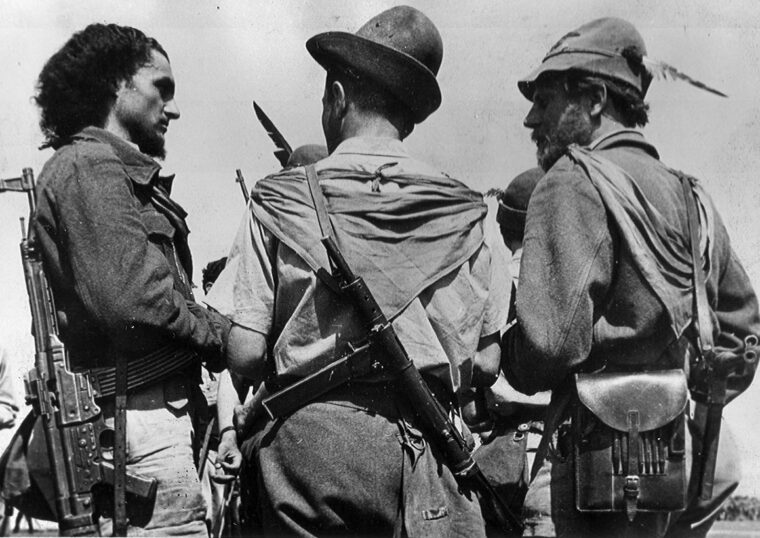
“Building a Bridge to the Future”
The arrival of de Angelis on Schwend’s doorstep seeking to initiate negotiations on behalf of the future Italian government renewed Schwend’s hope to be a part of the action and to “build a bridge to the future,” as he saw it.
Schwend knew they had to act quickly as the American 10th Mountain Division had entered the Po Valley and was already racing toward the Alps. Verona fell on the same day that the 88th Infantry crossed the Po River. Soon, all passes through the Alps would be in Allied hands.
In preparation for any eventuality, de Angelis requested that the partisan forces of Commandante Franco in Belluno speed toward Bolzano. The local volunteers were undermanned and underarmed. Allied air forces were prevented from making airdrops of arms into much of the region, given the concentration of German forces. As of May 1, 1945, the Giovane Italia partisan group operating in the Bolzano and Merano areas, commanded by Gino Beccaro, was 800 men strong with only 70 weapons among them, and only some 30 men operating in Merano.
CNLAI leader and future mayor of Bolzano Dr. Sandro Bonvicini reached an accord with Fascist troops in Bolzano to peacefully transfer their weapons to the partisans. Partisan Colonel Passerini was assigned the task of preparing a constitution for the postwar province of Bolzano. De Angelis convened a peace committee in Merano, including Gyssling and the honorary Swiss consul in Bolzano, Albert Crastan, to draw up the surrender terms for presentation to Wolff.
Earlier that day, Benito Mussolini had been captured and executed at Giulino di Mezzegra on Lake Como under orders from CNLAI headquarters in Milan. The bodies of Mussolini and his mistress were transported to Milan where they were hung by their feet for the world to see. The end was drawing closer— minute by minute.
Rejecting Unconditional Surrender
In Switzerland, Lt. Col. Victor von Schweinitz, chief of staff for the commander of German forces in Italy, General Heinrich von Vietinghoff, and SS Sturmbannführer (Major) Eugen Wenner were ordered to proceed to the Caserta, Italy, headquarters of Supreme Allied Commander for the Mediterranean, British Field Marshal Harold Alexander, and secure the Allies’ signatures on the instrument of surrender. The envoys would travel to Italy from Switzerland via France to avoid Wolff’s predicament the night before when he was surrounded by partisans near Lake Como and almost captured. It took a daring rescue by OSS agent Donald Jones in the early morning hours of April 27 to save Wolff, and Sunrise, from disaster.
On April 28, Wolff returned to Bolzano where he attended a meeting at the Alpenvorland headquarters of Gauleiter Hofer. From 2 pm to 7:30 am, von Vietinghoff, his chief of staff General Hans Röttiger, German ambassador to Italy Rudolph Rahn, and Gauleiter Hofer joined Wolff in his presentation of the latest Sunrise events. Wolff emphasized to Hofer that his dream of a postwar mountain enclave was entirely out of the question. To say the least, Hofer was deeply disappointed. Rather than employing political strategy, Hofer demanded that all troops in his territory, both the Austrian Tyrol and Alpenvorland, be placed under his control. This demand was met with vehement opposition from all present. A particularly heated argument raged between Hofer and Röttiger regarding realistic terms of surrender. In the end, Hofer would set out to strike his own deal.
De Angelis presented his terms, entitled, “Act of unconditional surrender of the headquarters of the troops and of the German services south of the boundary of the Brenner,” to Schwend for conveyance to Wolff. These called upon the Germans to surrender to Allied troops and partisans “no later than 0900 hours of the day 29 April.” Those found not in compliance would be regarded as rebels. Weapons dumps and warehouses were to be handed over and the German military had to immediately evacuate Bolzano and Merano. The local CLN would then assume control, with assurances of the well-being of the Allogen. These were very bold terms from a man whose armed forces were vastly outnumbered and outgunned by German troops and the local Allogen. They were rejected upon receipt.
Finding a Radio to General Mark Clark
In spite of the rejection, an invitation to continue at Wolff’s Bolzano headquarters was extended to de Angelis by way of Schwend, with one twist. Did de Angelis have radio contact with General Mark Clark’s 15th Army Group headquarters? The Germans wanted the presence of a representative of Clark with whom they could negotiate, and if de Angelis could facilitate this, then negotiations would be reopened. Knowing that the OSS Mission Norma, located in Villa di Legno, had a radio, de Angelis answered in the affirmative. Hearing this, Schwend promptly gave the green light to further talks. Unaware of the fate of von Schweinitz and Wenner in Caserta, the Germans wanted to open a second channel, this one to Clark, just in case the Sunrise contact with AFHQ and Alexander failed.
At 9 pm, the delegation of Gyssling, Crastan, de Angelis, Sandro Bonvicini of the Bolzano CLN and Mr. Nazari of the Merano CLN chapter met with SS General of the Police Karl Brunner (Polizeiführer für die Operationszone Alpenvorland). The negotiations lasted all night with Brunner standing his ground firmly and vehemently, at the same time buying time for Wolff’s emissaries to return from Caserta. Finally, at 5 am on April 29, General Brunner agreed to sign the terms of surrender hammered out through the night, with the proviso that Clark agree to send a representative.
De Angelis added the handwritten note: “The hostilities are suspended on both sides while waiting for the decision of Gen. Clark.”
At dawn, de Angelis drove with Commandante Franco to Mortidolo to find the OSS undercover Mission Norma stationed in the area. They wanted to transmit the urgent message to Clark’s headquarters. De Angelis met “Captain Sandro” (nom de guerre of OSS Captain Cristoforo de Hartungen), head of Mission Norma, who agreed to send the message, but a malfunctioning radio prevented the transmission. De Hartungen returned to Bolzano with de Angelis and Franco to find a replacement radio. Arriving in Bolzano at 8:30 pm, they began transmission eight hours later using the radio of OSS Mission Franconia. Nearly every hour, the German command sent couriers asking whether Clark had answered. Likewise, every hour Mission Norma repeated its message to headquarters.
This continued for days, periodically interrupted by fighting and German patrols. A typical message read: “We have reached agreement in principle to guarantee immediate control of Bolzano and Merano by the CLN in collaboration with the Allogenous [Austrian] population avoiding conflicts … Suspension of hostilities until the arrival of General Clark’s plenipotentiary. We believe that he can negotiate the surrender without condition of the army in South Tyrol …The aim of our initiative is to avoid absolutely a conflict between the Italian and Allogenous population. We believe that we are succeeding but the presence of your plenipotentiary is indispensable. Reply urgently.”
Silence. Word had spread quickly through the local populace that the Germans had surrendered. Jubilant crowds took to the streets of Merano where, on the morning of April 30, the Wehrmacht opened fire on an unarmed crowd of celebrating Italians, killing 15 and wounding 20. De Angelis later placed responsibility for this action at the feet of General Brunner. A fanatical Nazi, Brunner took part in many crimes against partisans and civilians, including the deportation of Jews from the Alpenvorland. Never convicted of war crimes, Brunner died in 1980.
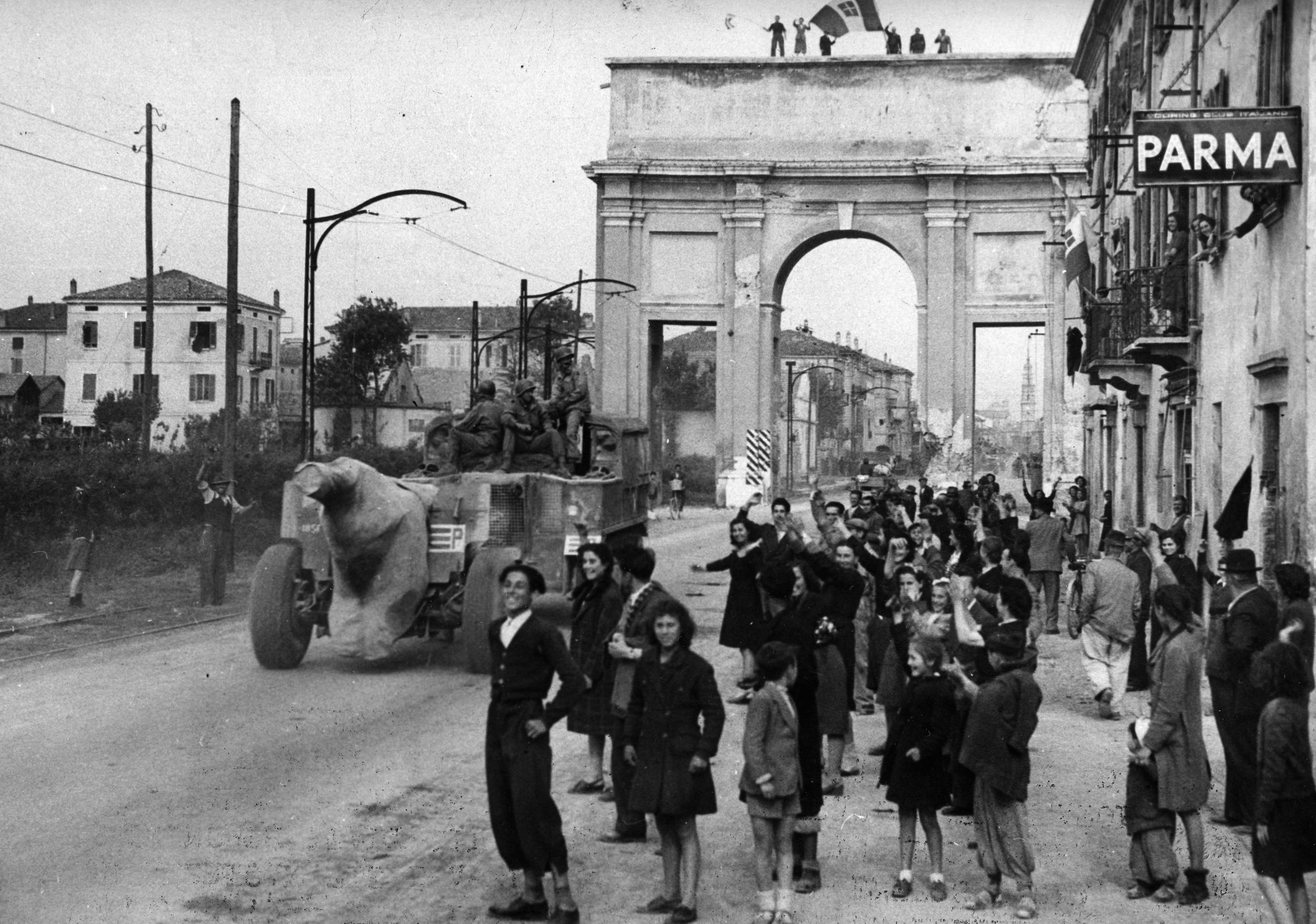
Hostilities Resume
A basic acknowledgment finally arrived, and then on the night of May 2, Clark responded with instructions to begin breaking all German resistance and to occupy storehouses and German positions. This gave de Angelis pause since this did not appear to be an appropriate response to their repeated cables, but he proceeded to order partisan units into action. During May 3, partisan groups attacked and disarmed isolated German patrols, including a confrontation with a group of SS soldiers unloading goods from a warehouse in the Bolzano industrial zone. The skirmish that erupted left approximately 80 casualties on each side.
Also, on May 3, an SS column was attacked in Predazzo, just south of Bolzano, by partisans who took 67 prisoners. When the Germans requested information on the whereabouts of the SS troops, the CLN reported that the partisans had attacked the column in retaliation for their burning down several houses and killing 27 Italians.
In the absence of a clear response from Clark, de Angelis, von Vietinghoff, and Wolff signed an agreement to evacuate the industrial zone and place it under the patrol of joint partisan-German patrols. This, at least, brought peace to the industrial sector of Bolzano.
An official Army communiqué trumpeted: “Troops of the Fifteenth Army Group have so smashed German Armies in Italy that they have been eliminated as a military force.” Some 120,000 Germans had been taken prisoner since the April 16 offensive started.
For the Allied troops, military actions were winding down but issues of administration were rapidly taking their place. It was important for the Allies to enter northeastern Italy as quickly as possible. Large numbers of German soldiers, many of them detached from their units and not under regular discipline, were roaming the countryside. Thousands of Italian partisans, not all under proper control or carrying weapons for the right reasons, could be found everywhere. There was urgent need for a new law and order in the Alto Adige.
Nervous negotiators on both sides anxiously awaited the return of Wolff’s emissaries from Caserta. A radio installed by Dulles in Wolff’s headquarters malfunctioned, temporarily cutting contact with Caserta. Von Schweinitz and Wenner were delayed by a circuitous route from Caserta to Bolzano. All shared genuine fears that they could fall into the hands of Kaltenbrunner or be intercepted by Hofer. There also was the danger of capture by the American 7th Army that was closing in on Innsbruck from the north.
Finally, the emissaries arrived in Bolzano at 3 am on May 1. Exhausted by the 32-hour journey that began by air from Caserta to Switzerland, from which they drove all night to Austria where they spent part of the following day and the entire night eluding friend and foe.
The emissaries, like Dulles and his Sunrise collaborators, had no notion of events that were occurring in Bolzano that threatened both Sunrise and the de Angelis negotiations, separate of one another, with thunderous collapse.
Wolff’s Tenuous Hold on Command
On the morning of April 30, Field Marshal Albert Kesselring, former commander of the German Army in Italy but promoted only two days before to commander in chief of all German forces in the south, including the Army Group Südwest, relieved his successor von Vietinghoff and Chief of Staff Röttiger of their commands. Evidently, Hofer, frustrated by the direction of Wolff’s negotiations and infuriated by von Vietinghoff not informing him of his agreement with the partisans, betrayed the entire Sunrise enterprise to Kesselring and Kaltenbrunner. By relieving von Vietinghoff and Röttiger, Kesselring had effectively removed Wolff’s two principal collaborators in his Sunrise efforts. Kesselring let Wolff know that he had referred the matter to Kaltenbrunner in Berlin, and, as Kaltenbrunner was in control of the Gestapo Sonderrollkommandos Begus and Skorzeny (Special Gestapo T Forces), Wolff knew his life was in peril.
Only three and a half hours after the emissaries’ return, Röttiger, Moll, Dollmann, and Wolff gathered to hear von Schweinitz and Wenner’s report. Now they had the added complication of determining which measures could be taken in the wake of von Vietinghoff’s removal to assure that the terms could be met on the following day, May 2, at 1200 hours Greenwich mean time. New commander in chief Schultz and his chief of staff, General Wentzel, had already advised Wolff that they would not issue orders to the army group to cease fire without the specific approval of Kesselring.
Wolff later wrote in his narrative to Dulles aide Gero Gaevernitz, “We decided that the only possible course of action was to prevent Schultz and Wentzel [from interfering] with any orders which we might issue for the cessation of hostilities.” With the agreement of his fellow conspirators, Wolff placed Schultz and Wentzel under arrest, and, in the absence of von Vietinghoff, Röttiger was placed in command. To prevent Schultz’s staff from alerting Kesselring or the German high command, telephone communications between Bolzano and Germany were cut off.
At 9:30 pm, an impatient message from Field Marshal Alexander arrived. He demanded an immediate response as to whether the surrender would take place on the date and at the hour stipulated in the instrument of surrender. Wolff’s immediate reply was to ask for one more hour. Alexander had no idea how tenuous Wolff’s hold on his command was at that moment.
Schultz and his aide were soon released and, along with Wolff, they tried reaching Kesselring, but he was traveling. Kesselring’s chief of staff, General Siegfried Westphal, also was unwilling to independently issue cease-fire orders without Kesselring’s permission.
At 10:00 pm, without word from Kesselring or Westphal; Herr, Lemmelsen, Wolff, and others decided to issue the cease-fire orders independently, telling troops to lay down their arms at the agreed-upon hour.
At 11 pm, word of Hitler’s death reached Wolff’s headquarters. Wolff and his companions felt this would ease the situation since officers no longer were bound by their oath of allegiance to Hitler.
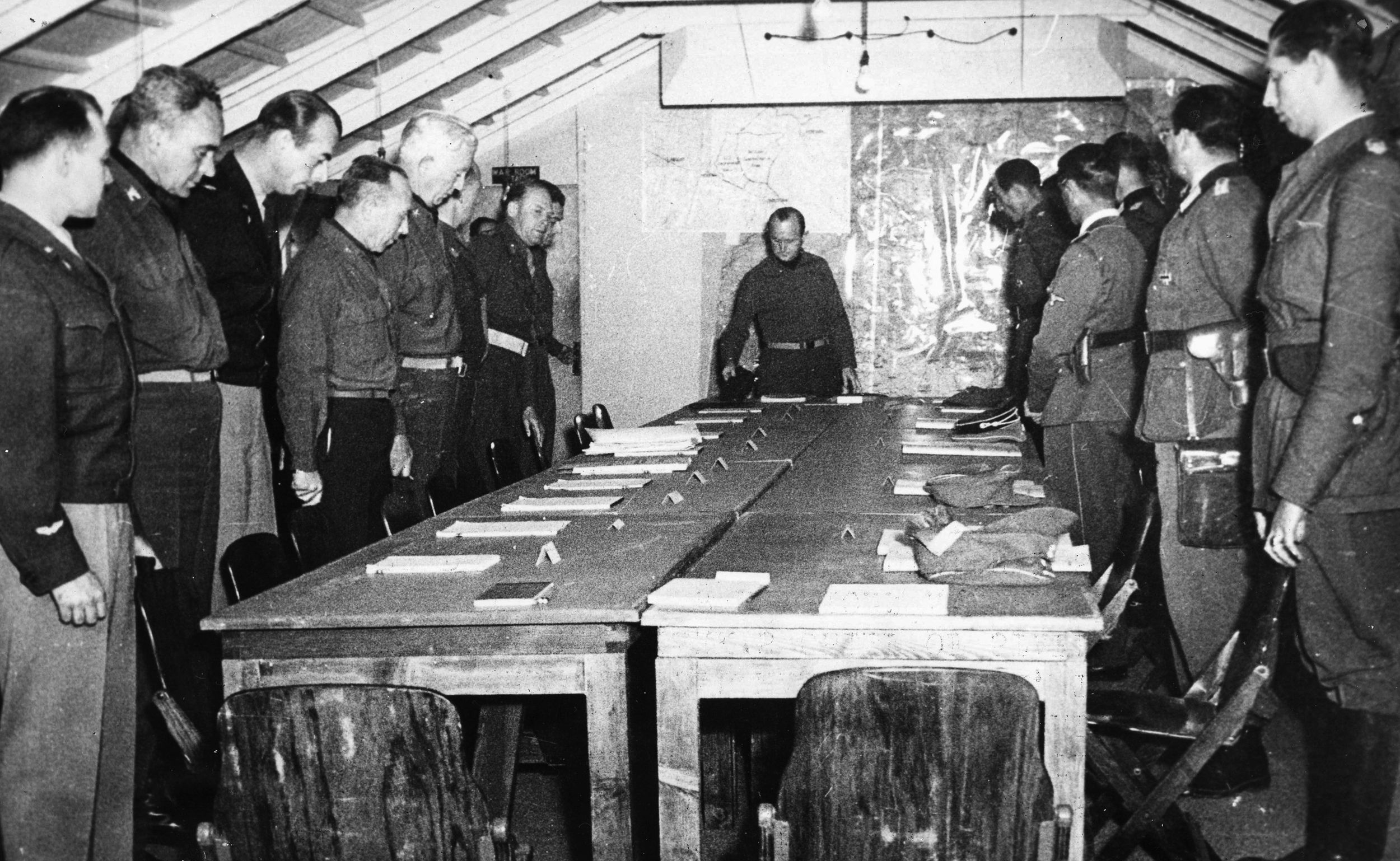
The End to Hostilities
This would not be the case. At 1:15 on the morning of the 2nd, less than 13 hours until the surrender was to take effect, Kesselring issued an order for the arrest of von Vietinghoff, Röttiger, Kempf, von Schweinitz and a Captain Altenpohl. Looking out from their underground shelter, Wolff saw heavily armed officers of the army group posted at the main exits.
Wolff said of those nervous, early morning hours: “The situation was now so tense that I ordered the seven tanks which were at my disposal to be lined up in front of my headquarters.” He also ordered 350 SS officers and men to be armed and ready to defend the headquarters against an attack by German forces.
At 2 am, Kesselring telephoned Wolff to sternly reprimand him for two hours, during which Wolff implored Kesselring to support the cease-fire. Finally, at 4:30 am on May 2, Kesselring relented, giving his approval for the cessation of hostilities in northern Italy. Shortly thereafter, von Vietinghoff was reinstated to his command.
At noon on May 2, hostilities in northern Italy came to an end. Wolff explained to Berlin that he had prevented a “Communist uprising” that would have established a “Soviet republic in northern Italy.”
Although Alexander had signed the instrument of surrender presented by von Schweinitz and Wenner on the 29th and de Angelis had his truce, it remained for General Mark Clark to host the formal ceremony on May 3 in which von Vietinghoff representative Lt. Gen. Fridolin von Senger und Etterlin surrendered the remaining Axis forces in Italy.
With major military operations ended, civil affairs moved to the front of the line. In Bolzano, de Angelis met with Röttiger and Wolff to discuss final terms and the important matter of bringing peace to the industrial zone of the city. At 11:30 am, de Angelis, Wolff, and von Vietinghoff signed an agreement to clear the industrial zone of Bolzano and, two hours later, signed the transfer of provincial administration to the CLN and Italian government.
De Angelis later wrote, “In the afternoon of 3 May all of Bolzano was beflagged and the CLN, seated in the Palace of the Government, began its work of organization. A message by me was transmitted on the day of the 4th [and] gave news of the passage of the administration of the territory to the CLN and invited Italians and Allogens to collaborate fully and actively with the work of common reconstruction.”
Treasure Hunting in the Dolomites
The first American patrols arrived on May 4, and on the following day the American command made its appearance in Bolzano. Instead of the anarchy the Allies had predicted in 1944, particularly in postwar Bolzano, the Americans found a tense situation well under the control of the local Italian CLN officials in cooperation with the German-speaking majority. The general reception for the Americans was cool from the Allogen population, in stark contrast with the joyous greetings in the south. Sensing hostility to outside control, the Allied Commission decided to forgo its plans for implementation of Allied military governments in many areas of the Alto Adige in favor of local CLN administration.
When American troops finally arrived in Bolzano, they found warehouses teeming with just about any merchandise to be thought of, including pianos and Fiat cars. There were bales of silk stockings, warehouses of liquor, 5,000 commercial radios, 1,000 tons of food, and millions in Italian currency. Champagne flowed freely. A sign that hung over a bar of the 87th Infantry Regiment read: “Champagne Free! Beer 20 Cents. Only you wealthy guys drink beer!”
The author of a July 1945 report, “The Army Goes on a Treasure Hunt,” for the Fifth Army’s finance division, felt confined by the format of a “dry report” and told the reader that “we leave it to your imagination or if you wish to your postwar time to tell you of the thrilling chases over the mountain passes and into dark caves, and searching through safes, etc., etc., for the treasure of the Nazi and the Fascist!
“So, the treasure hunt goes on over the Dolomites—the Brenner—the Bergamo and the Carnic Alps—up and down the lakes—in caves. The score rolls up and up and it is billions we talk of now—not millions—and platinum and gold and jewels and moneys of every country—not the paper money either—gold sovereigns—double eagles—napoleons—gold marks—and even barrels of silver which may go to make silver nitrate for the Medical Department or some other prosaic task.”
A Luxurious Surrender
From the end of fighting to May 13, Bolzano was appropriately described as “one of the most fantastic situations that has grown out of the German surrender.” Wehrmacht soldiers sped around in convertibles with their girlfriends, inhabited restaurants and cafes, and lived in houses and hotels while GIs slept in tents, leaving them to wonder in response to a questionnaire: “What the hell’s cooking—who won this war?”
A member of the 86th Mountain Infantry remarked: “We fought the war and they’re celebrating the end of it.” According to an Associated Press report from Bolzano, “groups of fifteen or twenty local youngsters—obviously holdovers from the Hitler Youth—goose-stepped down the main streets in the early evening singing ‘Hitler Is My Führer’ and the ‘Horst Wessel Lied.’”
It amused the watching German soldiers and shocked the Americans. An American investigator found in a German military hospital “enough rifles, machine pistols, hand grenades and small mortars in one cache to fill a two and one-half ton truck.” A time bomb went off in the battalion headquarters at Colle Scaro, a former Gestapo headquarters, wounding 22 American soldiers four days after the German surrender.
Ted Ryan of the OSS Caserta station described the scene in Bolzano as he and Dulles aide Gero Gaevernitz arrived for meetings with Wolff and von Vietinghoff on May 9: “It was a peaceful scene, rather like lunchtime at the MGM Studios … A bronzed lad in khaki Afrika Korps shorts, balanced on the handlebars of his bicycle; a smiling girl in a red-and-white striped dirndl. Austrian types in black Homburgs and velvet jackets moved casually through the streets. In a field at the roadside lolled some hundreds of Wehrmacht troops only mildly interested in the American staff car which rolled by them. The first traffic control we encountered was, indeed, not an American MP but a square, very correct German soldier with an automatic weapon slung over his shoulder.”
All this while, General Wolff still held court in his luxurious headquarters at the palace of the Duke of Pistoia, “a monumental red brick building enclosed in a compound the size of a good New York City block,” as Ryan described Wolff’s lair. Their meetings were cordial with all the Prussian formalities of heel clicking and salutes, highlighted by four-course meals with “apologies for the fare, and toasts to the ‘game’ and to the players.”
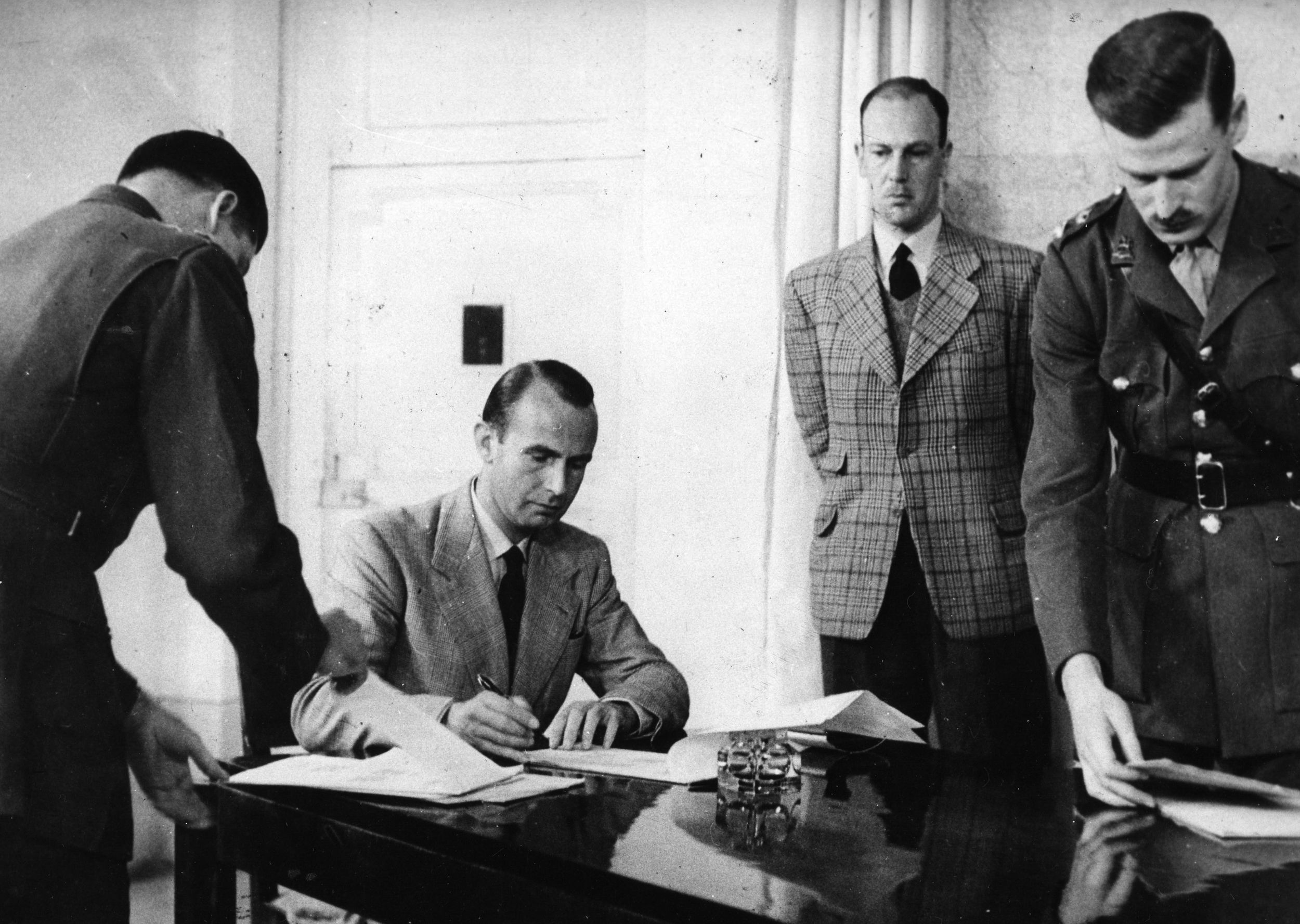
The Search for POWs
On their final evening, after Mrs. Wolff had poured the coffee and liqueurs, the conversation uncomfortably turned to Ryan, who brought up the most important topic to Colonel Russell Livermore, 15th Army representative in Bolzano, and to the OSS, including the whereabouts and well-being of Allied officers in German POW camps, in particular, OSS agent Roderick “Steve” Hall. Hall had been included in Dulles’s original request for prisoner release as a sign of good faith in the early Sunrise negotiations.
While Wolff managed to release future Italian prime minister Ferruccio Parri, he lied to Dulles, telling him that Hall had been transferred to the Mauthausen camp in Germany. Now, Wolff’s staff was stonewalling Livermore’s requests, and Ryan wanted to impress upon Wolff and company that this was a very serious matter. “Hüll? Hall? Yes, there had been a Captain Hall … who would not reveal his citizenship; during an air raid in Bolzano he had hung himself in his cell.”
Ryan knew this to be a deliberate lie. Unbeknownst to the participants, OSS Captain Al Materazzi was investigating Hall’s death. Materazzi had found the death certificate, spoken with the medical student who had signed it, and then located the gravesite. It was immediately clear that Hall had been tortured and murdered by the Nazis at the Bolzano concentration camp. Further investigation revealed that Hall had been murdered in February 1945, just prior to Dulles’s request for an act of good faith from Wolff.
To the U.S. government, Bolzano was an extremely delicate situation. Wolff’s cooperation in Sunrise put him and his collaborators in special positions—just as they had hoped. The delicacy of the cultural balance and the potential for hostilities given the number and concentration of German troops coupled with the majority Allogen citizenry added up to a potentially explosive situation.
Tensions Between the Austrians and Italians
Locally, de Angelis had created a coalition government combining representatives of the Italian CLN with members of the Tyrolean Peoples Party. Accusations flew back and forth between the groups but, fortunately, it was largely only words that flew through the air. Both Italians and Allogens wanted the active participation of the Allies because each felt an outside military force would protect them from each other. The continued presence of German troops was an irritant, but largely did not factor into the local political equation.
The more important questions of languages that would be taught in schools and posted on streets and buildings took precedence. Both sides jockeyed for better position in the composition of local and provincial governments. Larger questions about the future of the province—whether to hold a referendum on returning to Austria or staying with Italy—loomed in the background.
The Italians feared that the U.S. State Department preferred a united Tyrolean state under the Austrian flag, as C.L. Sulzberg wrote in The New York Times in January 1945: “United States foreign policy, as represented by the State Department, desires the re-establishment not only of an independent Austria with a Government of popular choice, but favors enlarging such a State by the cession to a future Vienna administration of the Bolzano area obtained by Italy after the last war … would move the Austrian-Italian border well south of the Brenner Pass, including considerable portions of the mountainous resort areas, as well as the Bolzano rail center.”
British political adviser to the Allied Commission A.S. Halford conveyed the sentiments of the British embassy in his May 28, 1945, memo to the commission that Austria should be regarded as “a prostrate enemy” and “when in doubt, German interests should be subordinated to Italian interests so long as gross and patent injustice, whereby danger to our lines of communications might result, is not done.”
On Sunday, May 13, SS General Karl Wolff received hundreds of guests who had come to honor him on his 45th birthday and, perhaps, to celebrate the turn of events. Instead, Wolff, his wife and their guests were “abruptly lined up in the courtyard and, in two-and-one-half-ton trucks, removed as P/Ws from the halls of Pistoia.”
In an effort to withdraw American military forces from the region, the 88th turned over command of Bolzano to the Italian Folgore Paratroop Division on May 31, 1945, in a ceremony in front of the city’s war memorial. The Austrians were intensely upset and openly hostile over the substitution of Italian for American troops, and even the Allied Commission complained about the behavior of the paratroopers.
Animosity had risen so high that the Allies decided to leave behind the 349th Infantry Regiment as a buffer between Italians and Austrians. This ignited a spark among the Allogen population that took decades to extinguish. At the end of 1945, Bruno de Angelis stepped down from his successful term as prefect of Bolzano. He moved to Rome where he was a representative of the Socialist Party and served as minister without portfolio in the Ministry of the Interior. Although he was eyed as a possible candidate for an elected national office, de Angelis soon disappeared from the political landscape.
Agreements were reached with the French for their withdrawal from the western provinces. Compromises were reached with Tito in the settlement of the Venezia Giulia. All of the provinces had been fully handed over to the Italian government, except one—Bolzano. Bolzano did not rejoin the Italian Republic until late 1946.
A Settled Border, a Resolved Peace
By mid-May 1945, the border issues had been settled by a council of foreign ministers in Paris, in essence, along the “spartiacque,” where on one side the waters run northward to the Danube and finally the Black Sea and on the other side, the waters run south to the Adriatic.
The 87th Division history recounted the memories of soldiers on leaving “lovely Lake Garda, moving north through the valley to Rovereto and then east up onto a beautiful mountainside. The battalions were bivouacked in and around Folgaria. After the memory of the seared browns of the Apennines and the recent dust of battle, the May colors in the foothills of the Alps seemed unbelievably fresh and vivid. The towns were pastel-colored and more picturesque in architecture than the Italy of farther south. Every view seemed like a children’s book illustration.”
Dennis Whitehead is a freelance journalist in Arlington, Virginia. This story is dedicated to the memory of OSS vet Al Materazzi who gave vital support to this author, the same he has given to countless journalists and academics.
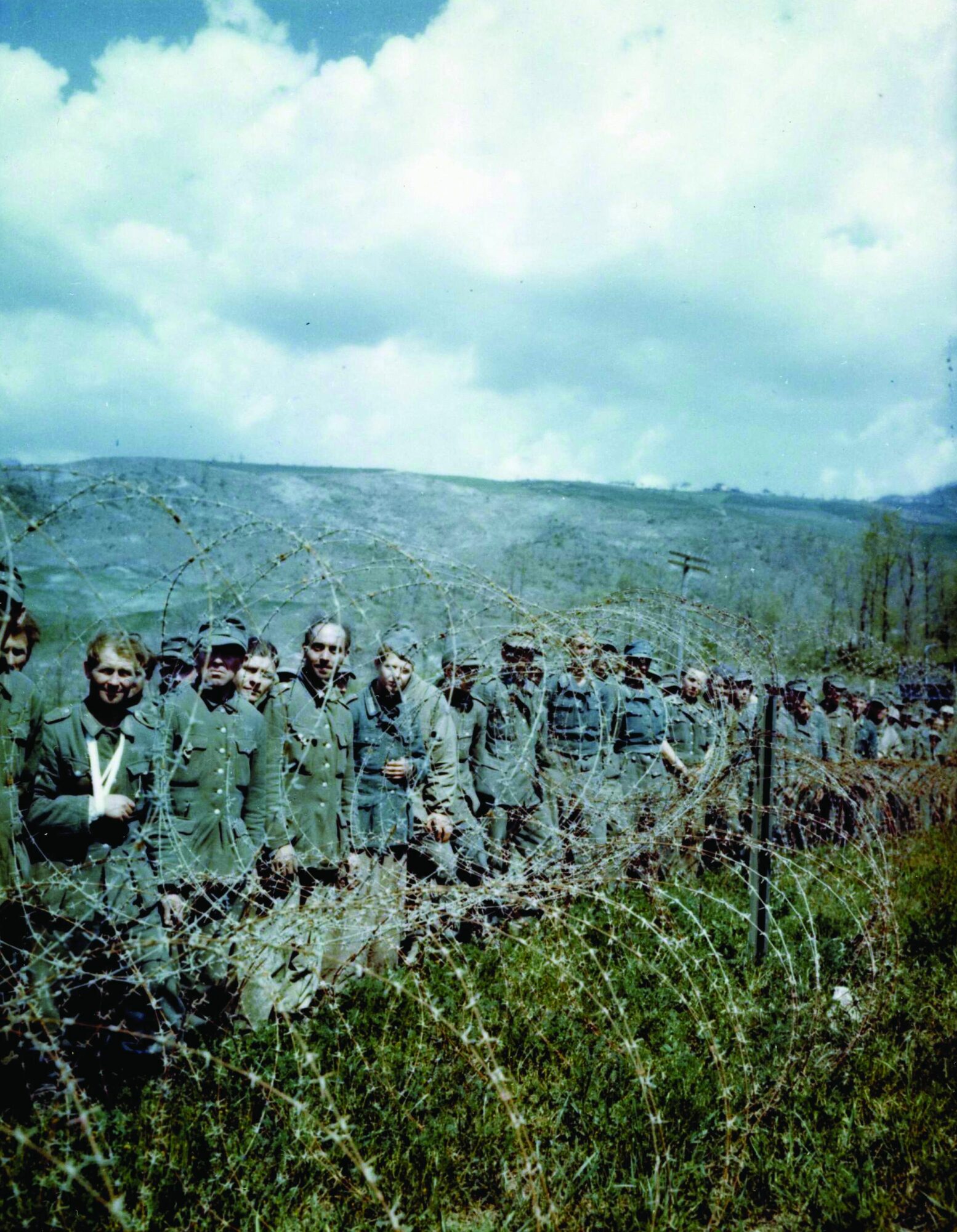
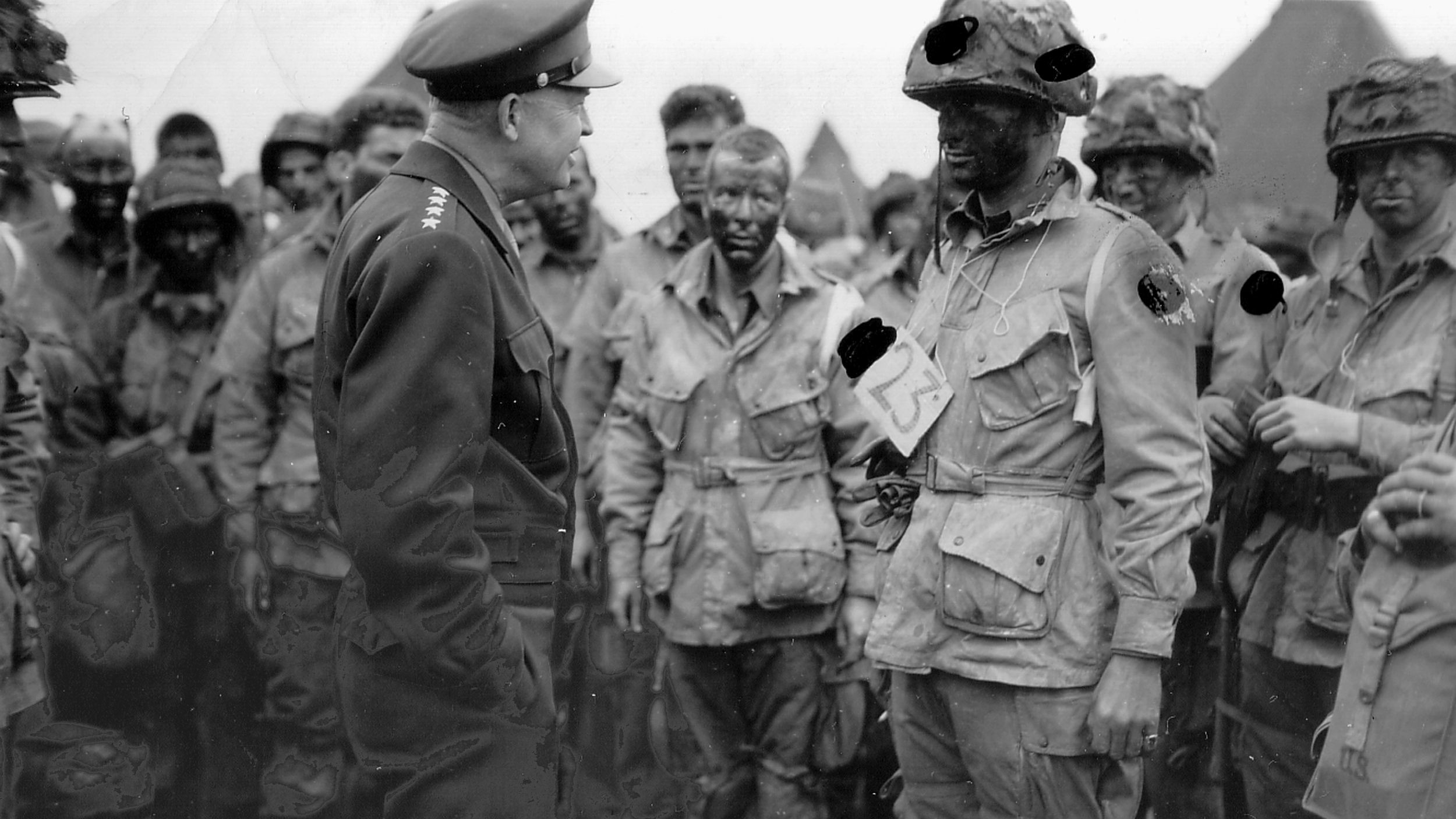
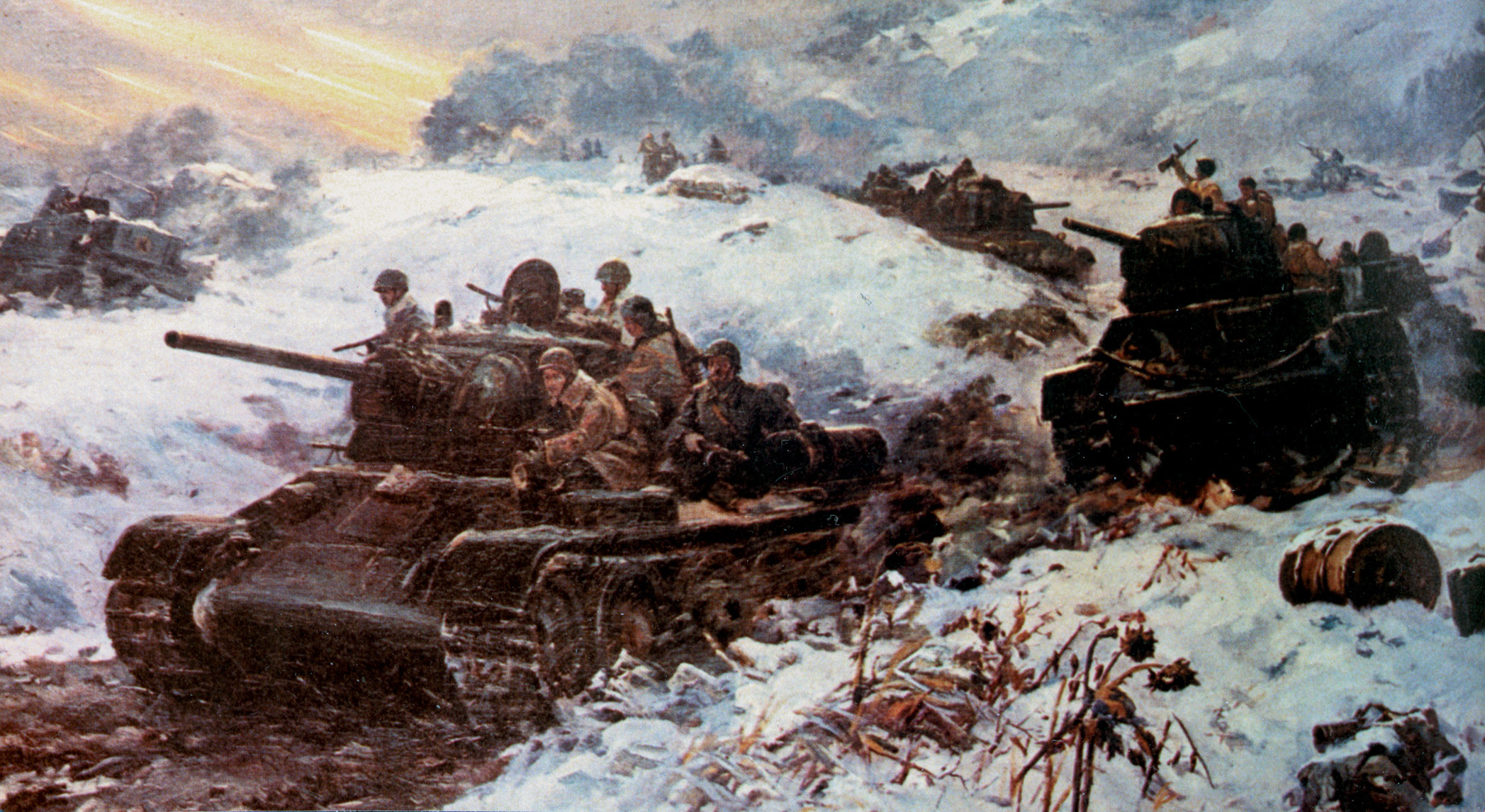
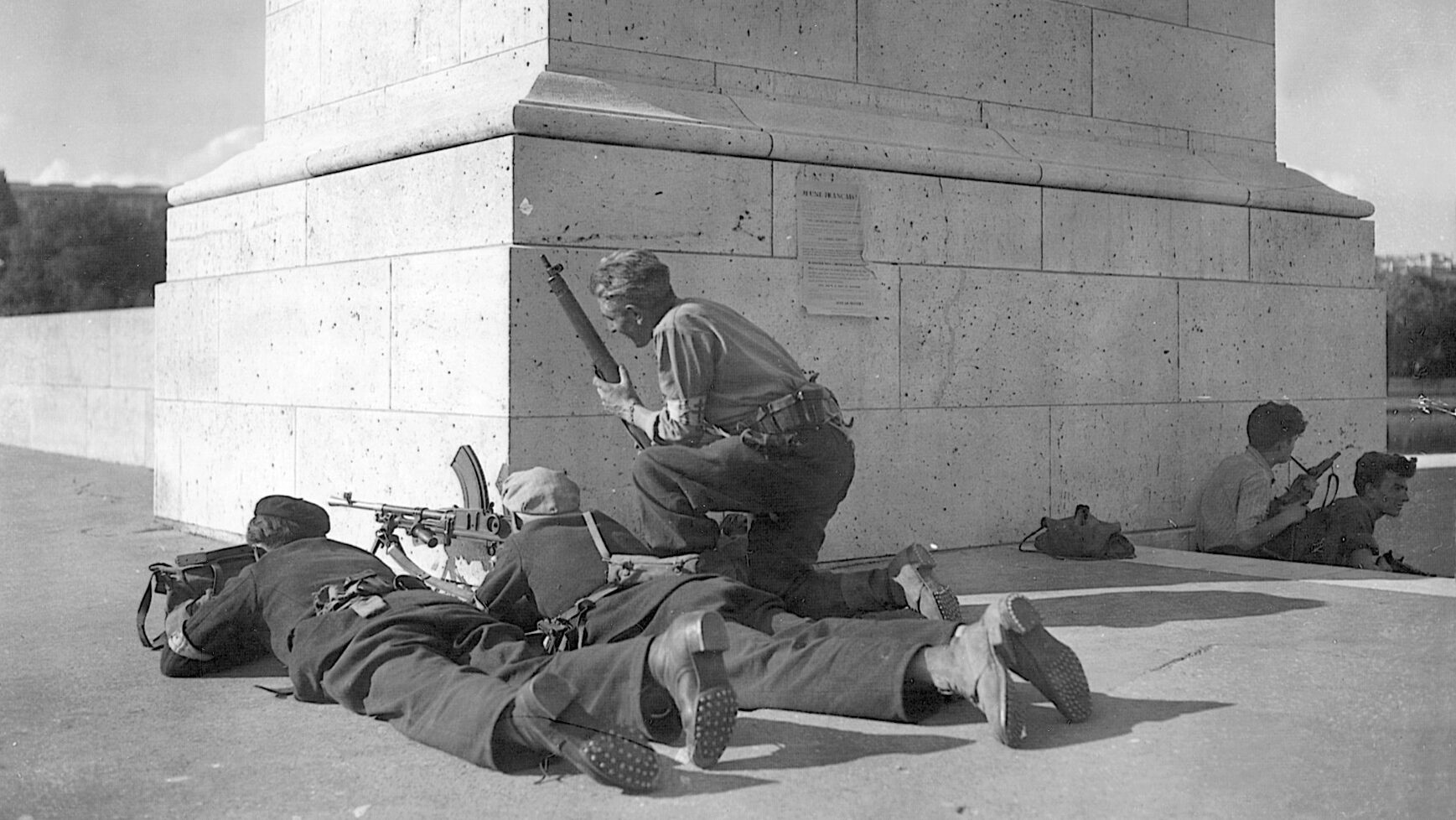
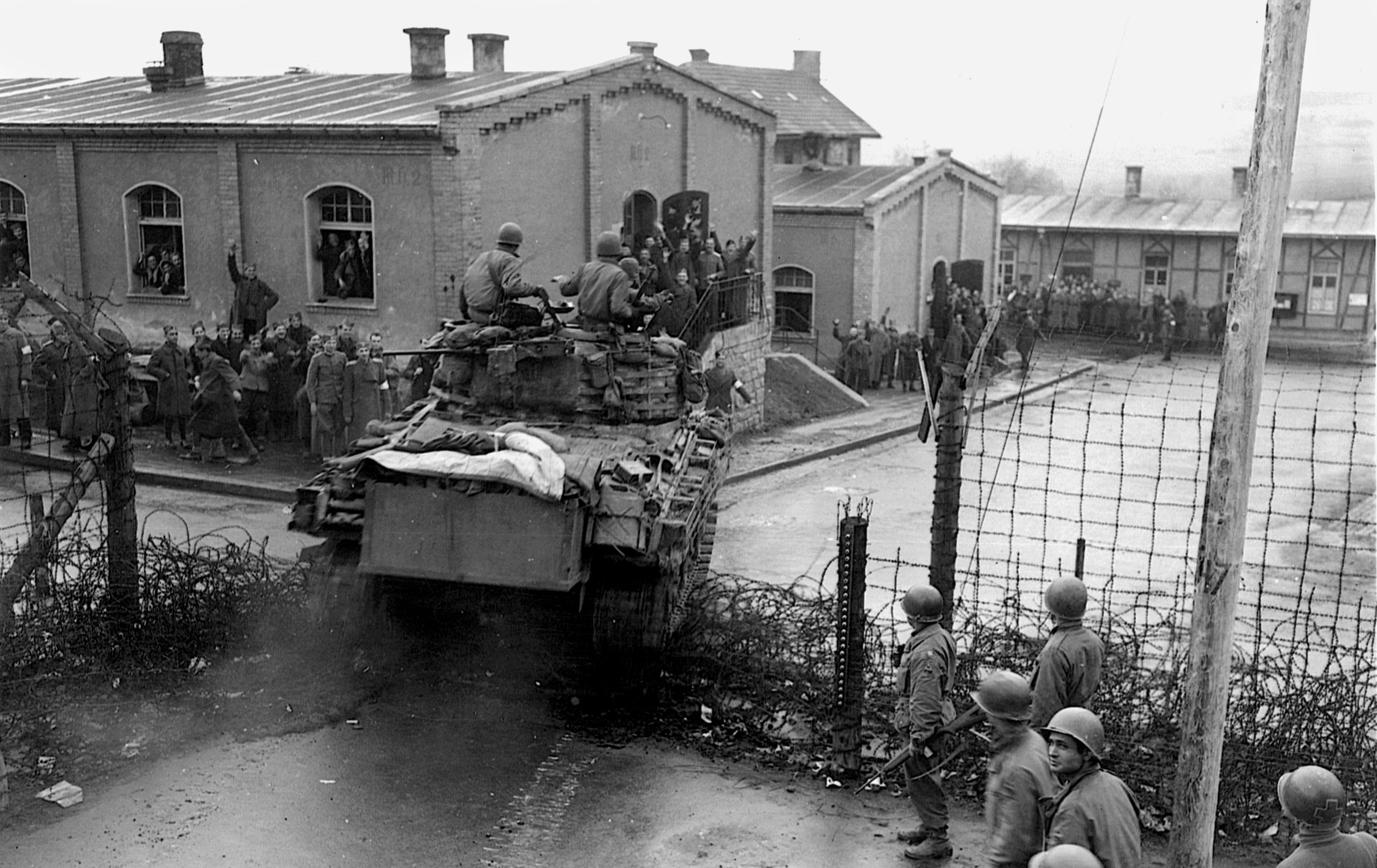

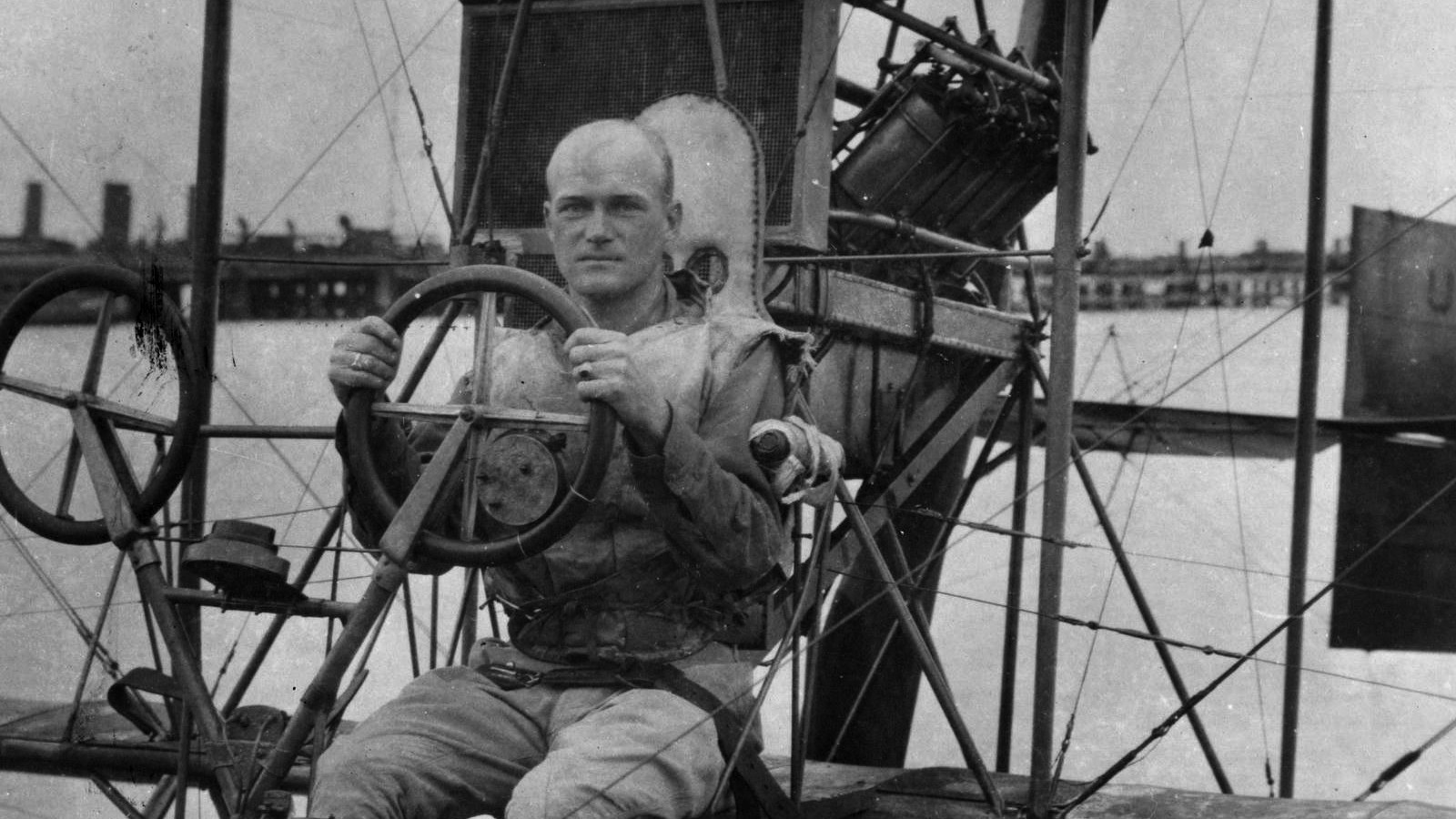
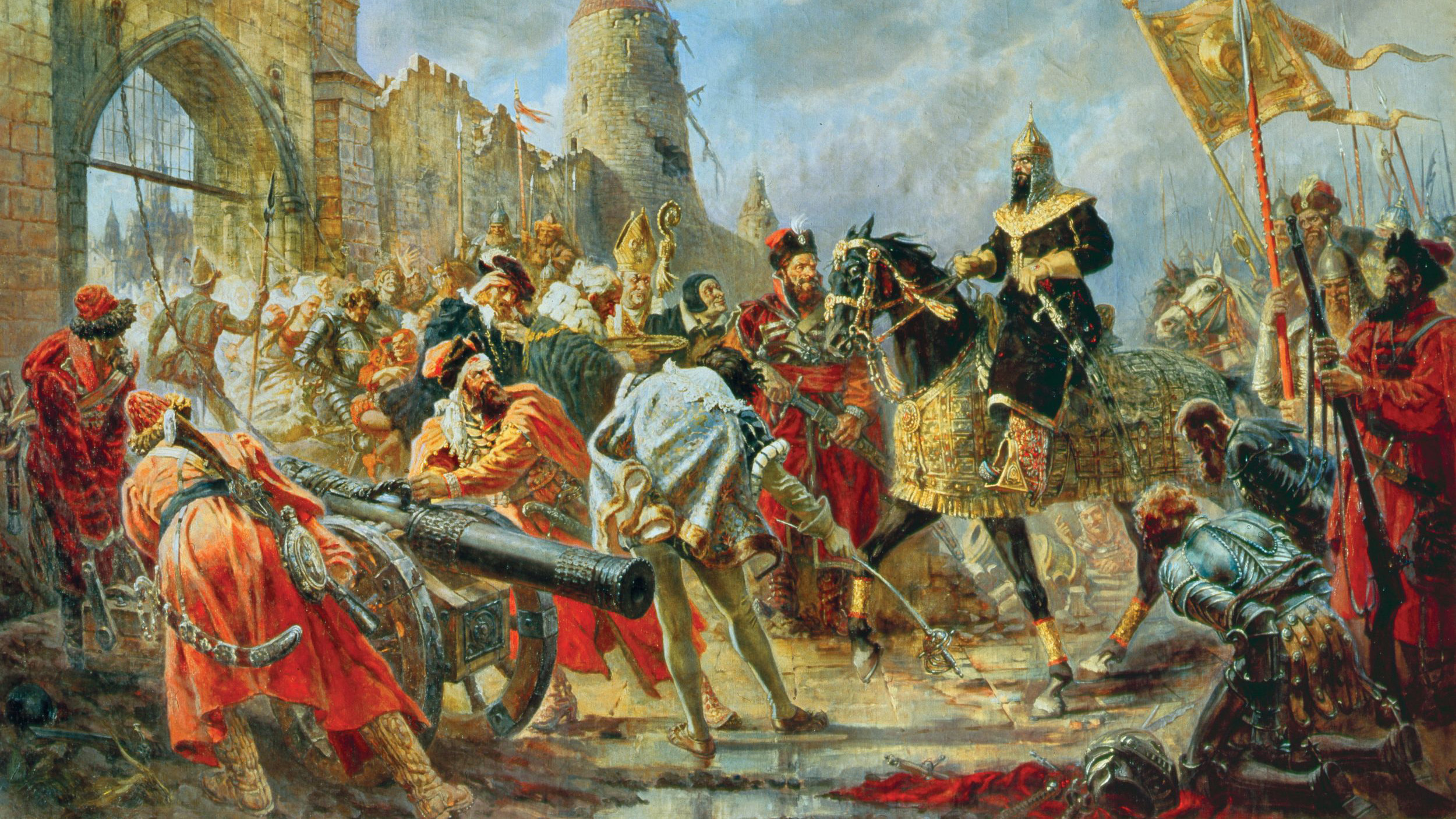
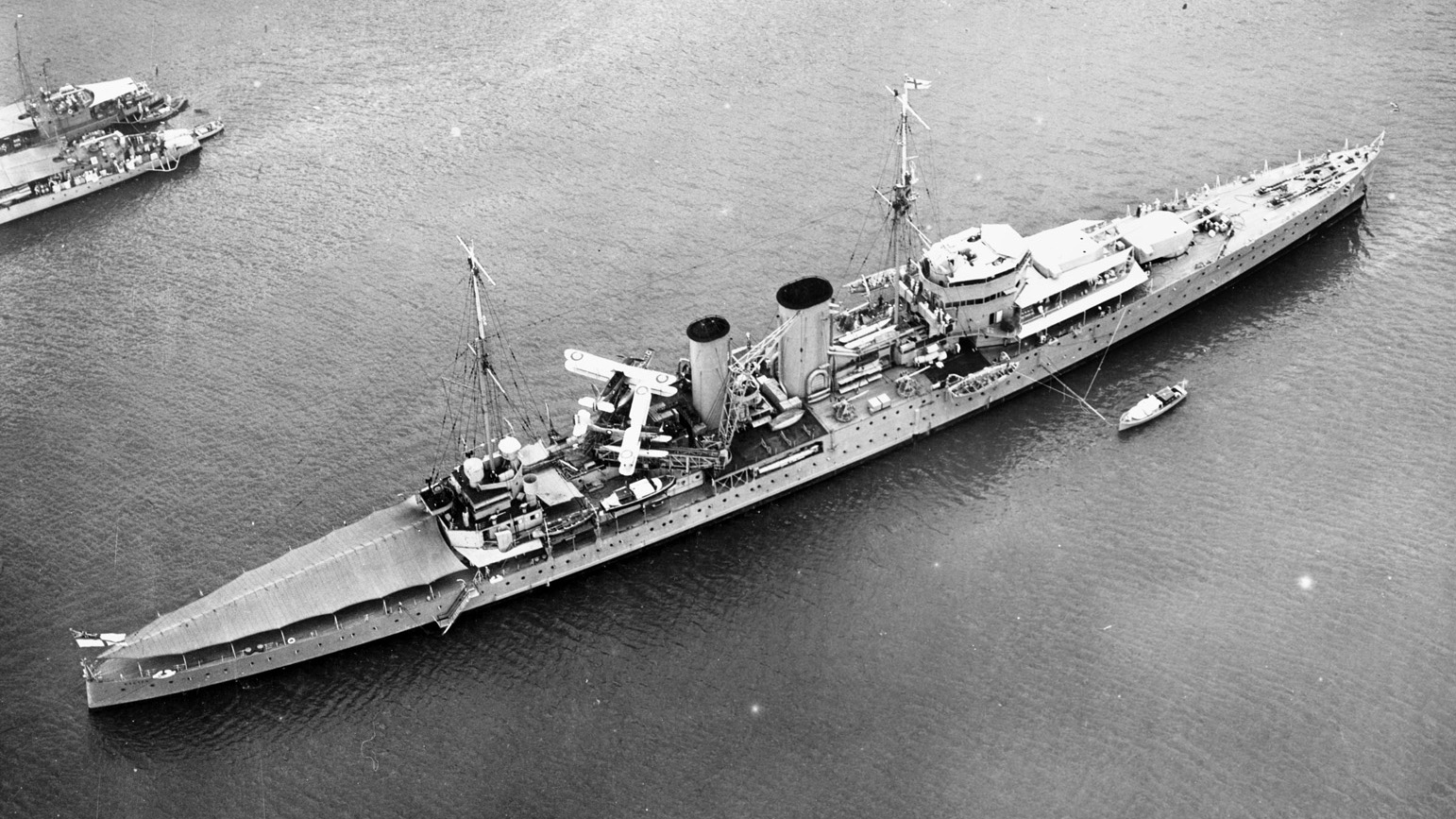
My grandfather Col. James H. Penick was in charge of Allied finances in Italy. He got word that the Germans had taken tons of gold from the Bank of Italy and cached it in a fortress near the Brenner Pass. He found it there and returned. it to Rome…23 tons.
Relative was there in bolzano in the 8th army in villa at surrender
My father Henry McLeod Threlfall,OBE (1907-85) recorded his life and wartime duties in photographs, which I have both on paper and digitised. These include a mission, together with Col. Russell B. Livermore, whom you mention, to the SS commander General Wolff’s headquarters in Bolzano in May 1945. Before he died, the Imperial War Museum in London recorded all Henry Threlfall’s military recollections in 7 reels, then summarised them. I am currently transcribing this section and trying to fit them into your impressively detailed account. If you have any mention of Lieutenant Col. Threlfall dealings with Gen.Wolff in Bolzano, I would be very pleased to hear or read them.
Thanking you in advance,
Monica Threlfall, PhD